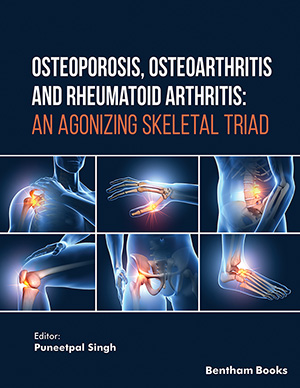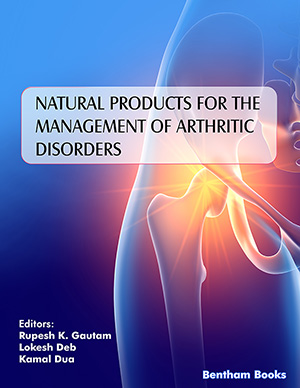Abstract
Introduction: The “scleroderma” type capillaroscopic pattern is a reference pattern in rheumatology that is a diagnostic sign for systemic sclerosis (SSc) in an appropriate clinical context and is observed in more than 90% of scleroderma patients. Similar microvascular changes, the so-called “scleroderma-like”, have been described albeit in a lower proportion of patients with other rheumatic diseases, such as dermatomyositis (DM), undifferentiated connective tissue diseases (UCTD), systemic lupus erythematosus (SLE), etc. Three distinct stages of “scleroderma” pattern have been suggested by Cutolo et al., i.e., “early”, “active”, and “late”. However, disease duration is just one of the factors that contributes to the progression of microvascular changes, and in this regard, “active” or even “late” pattern could be observed in patients with shorter disease duration. In addition, stable microvascular changes could be found for long periods in other cases.
Objective: The aim of the study was to assess the presence of differentiating features between “scleroderma” pattern in SSc and “scleroderma-like” pattern in other rheumatic diseases.
Methods: 684 capillaroscopic images demonstrating a “scleroderma” and “scleroderma-like” pattern have been analysed in the current retrospective cross-sectional study. 479 capillaroscopic pictures were obtained from 50 SSc patients, 105 from 7 DM patients, 38 from 10 rheumatoid arthritis (RA) patients, 36 images from 5 patients with SLE, and 26 images from 9 patients with UCTD. All capillaroscopic images used in the current analysis have fulfilled the criteria for “sclerderma/scleroderma-like” pattern, as the pathological changes in the capillaroscopic parameters have also been confirmed by quantitative measurement of capillary diameters, capillary density, and intercapillary distance. All the images have been categorized into one of the following groups, i.e., “early”, “active” and “late” phases (according to the definition of Cutolo et al.), or “other” findings, the latter being specifically described as they could not be attributed to one of the other three categories.
Results: 479 capillaroscopic pictures were obtained from 50 scleroderma patients. 31 of them showed an “early”, 391 an “active” phase, and 57 a “late” phase “scleroderma” type microangiopathy. In 69 images assessed as an “active” pattern, neoangiogenesis was found. In 43 out of 105 capillaroscopic pictures from DM patients, an “active” phase was detected; in 2 of the images, a “late” pattern was found, and in 60 capillaroscopic pictures, neoangiogenesis in combination with giant capillary loops was observed. Early microangiopathy was not found in this group. Among capillaroscopic images from SLE patients, “late” phase microangiopathy was not found. “Early” phase was present in 3 images, “active” phase in 29, neoangiogenesis in “active” phase in 4 pictures. Early microangiopathy was detected in 11 capillaroscopic pictures from RA patients (8 out of 9 patients), an “active” phase in 4 images (3 patients), and in 23 capillaroscopic images, neoangiogenesis with mild capillary derangement and capillary loss and single giant capillaries (“rheumatoid neoangiogenic pattern”) were observed. Classic “late” type microangiopathy was not found in RA patients as well as among patients with UCTD. The predominant capillaroscopic pattern in UCTD patients was early microangiopathy (n = 23). The rest images from UCTD exhibited features of the “active” phase.
Conclusion: In conclusion, early microangiopathy was observed in RA, SLE, and UCTD patients, but not in patients with DM. An “active” phase “scleroderma” type capillaroscopic pattern was detected in all patient groups other than SSc, i.e., DM, SLE, RA, and UCTD. “Late” phase “scleroderma” type microangiopathy was present in patients with scleroderma and DM and was not observed in SLE, RA, and UCTD. Despite the fact that in some cases, microangiopathy in scleroderma and other rheumatic diseases may be indistinguishable, the results of the current research have shown the presence of some differentiating features between “scleroderma” and ”scleroderma-like” microangiopathy that might be a morphological phenomenon associated with differences in the pathogenesis and the degree of microvascular pathology in various rheumatic diseases.
Keywords: Capillaroscopy, “scleroderma-like”, systemic sclerosis, microvascular damage, connective tissue diseases, UCTD.
[http://dx.doi.org/10.1001/archinte.1925.00120130076008]
[http://dx.doi.org/10.1136/annrheumdis-2013-204424 ] [PMID: 24092682]
[http://dx.doi.org/10.1002/art.1780230208] [PMID: 7362667]
[PMID: 6335855]
[http://dx.doi.org/10.1001/archderm.139.8.1027] [PMID: 12925391]
[http://dx.doi.org/10.1097/RHU.0b013e31822be4e8 ] [PMID: 21869710]
[PMID: 22127112]
[http://dx.doi.org/10.1002/art.1780240704] [PMID: 7259800]
[PMID: 10648032]
[http://dx.doi.org/10.1007/s10067-014-2795-8]
[http://dx.doi.org/10.1016/j.semarthrit.2017.06.001] [PMID: 28668440]
[http://dx.doi.org/10.1111/j.1468-3083.2004.00853.x ] [PMID: 14678534]
[http://dx.doi.org/10.1136/ard.55.8.507] [PMID: 8774177]
[http://dx.doi.org/10.1191/0961203302lu144oa] [PMID: 11899953]
[http://dx.doi.org/10.1007/s00296-012-2434-0] [PMID: 22527142]
[http://dx.doi.org/10.2174/1573397113666170615093600 ] [PMID: 28641551]
[http://dx.doi.org/10.1016/j.mvr.2012.03.002] [PMID: 22426123]
[PMID: 29201317]
[http://dx.doi.org/10.1007/s10067-019-04561-x] [PMID: 31016582]
[http://dx.doi.org/10.3899/jrheum.180615] [PMID: 30554151]
[http://dx.doi.org/10.3899/jrheum.200020] [PMID: 32295850]
[http://dx.doi.org/10.1177/09612033211027935] [PMID: 34192955]
[PMID: 23090372]
[http://dx.doi.org/10.1136/ard.29.3.244] [PMID: 5432591]
[http://dx.doi.org/10.1007/s10067-004-0988-2] [PMID: 15351873]
[http://dx.doi.org/10.1007/s10067-019-04716-w] [PMID: 31396833]
[http://dx.doi.org/10.1016/j.autrev.2019.102394] [PMID: 31520797]
[http://dx.doi.org/10.1002/art.1780230510] [PMID: 7378088]
[http://dx.doi.org/10.1056/NEJM197502132920706 ] [PMID: 1090839]
[http://dx.doi.org/10.1002/art.1780310302] [PMID: 3358796]
[http://dx.doi.org/10.1002/art.1780251101] [PMID: 7138600]
[PMID: 10544849]
[http://dx.doi.org/10.1024/0301-1526.35.1.5] [PMID: 9163237]
[http://dx.doi.org/10.1111/1756-185X.13760] [PMID: 31808306]
[http://dx.doi.org/10.1016/S0140-6736(03)14368-1] [PMID: 14511932]













